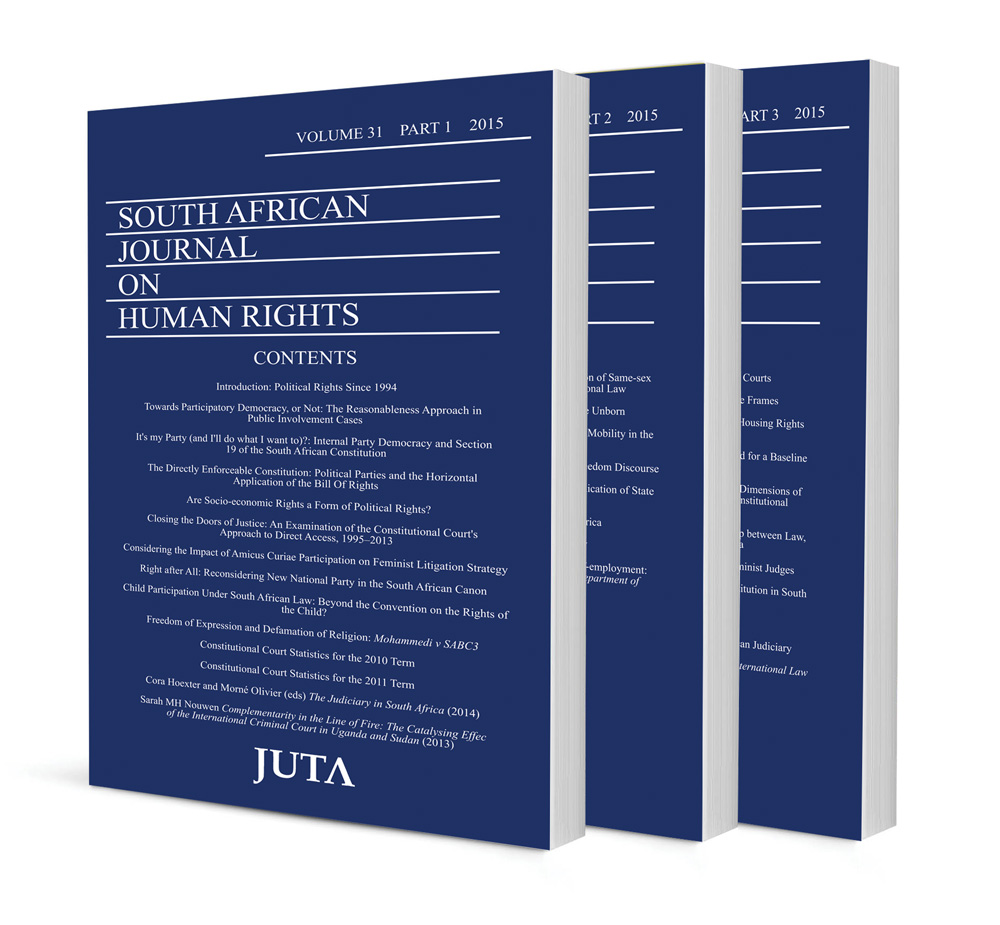
Substantive equality and caregiver responses to discrimination against children with Disabilities in Orange Farm
Authors Rosalind Elphick, Jean Elphick, Zosa de sas Kropiwnicki
ISSN: 1996-2126
Affiliations: Research Fellow, University of the Free State; PhD Candidate, Development Studies and Anthropology, University of Johannesburg; Senior Lecturer, Development Studies and Anthropology, University of Johannesburg
Source: South African Journal on Human Rights, Volume 30 Issue 2, 2014, p. 221 – 251
Abstract
The right to equality for children with disabilities in South Africa is strongly secured by various binding international conventions, local legislative and constitutional provisions, as well as state policies designed for the practical implementation of this right. Nevertheless, caregivers of children with disabilities in Orange Farm, near Johannesburg, identify discrimination from family, community members and service providers as a leading issue affecting their lives. These caregivers form part of a Community-based Rehabilitation (CBR) self-help group that aims to empower caregivers of children with disabilities to become politically active and exercise agency in the realisation of their children’s rights. This article describes the agentic strategies that caregivers devise in order to access the right to equality for their children with disabilities. This case study examines caregivers’ constitutional literacy, self-efficacy, agency and the opportunity structures within which they operate. The environmental and attitudinal barriers described in the Social Model of Disability illustrate the opportunity structure experienced in Orange Farm — a quagmire of discriminatory belief systems, exclusionary practices, and an inaccessible justice system. The interdisciplinary notion of agency — as expounded by Gidden’s ‘Theory of Structuration’, Bandura’s notion of ‘agency as intentionality’ and Foucault’s ‘strategy of struggle’ in power relationships — provides the theoretical framework for describing caregivers’ strategies to overcome the barriers they face. These are presented against the backdrop of a detailed analysis of the content of the state’s obligation to promote equality. The article concludes with recommendations for making equality more accessible to those who arguably need this right the most.